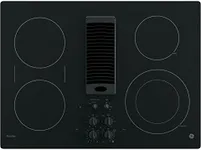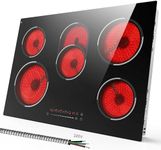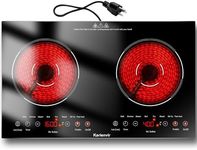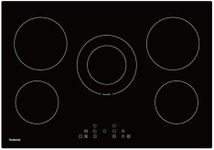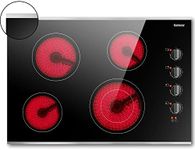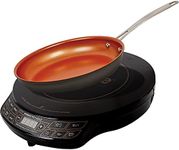Buying Guide for the Best Electric Cooktops
Choosing the right electric cooktop can significantly enhance your cooking experience. Electric cooktops are popular for their sleek design, ease of cleaning, and consistent heating. When selecting an electric cooktop, it's important to consider various specifications to ensure it meets your cooking needs and fits well in your kitchen. Here are some key specifications to consider and how to navigate them.SizeThe size of the cooktop is crucial as it needs to fit into the designated space in your kitchen. Electric cooktops typically come in widths ranging from 24 to 36 inches. A 24-inch cooktop is suitable for smaller kitchens or limited counter space, while a 30-inch cooktop is a standard size that fits most kitchens. A 36-inch cooktop offers more cooking zones and is ideal for larger kitchens or for those who cook frequently and need more space. Measure your available space and consider your cooking habits to choose the right size.
Number of BurnersThe number of burners on an electric cooktop determines how many pots and pans you can use simultaneously. Cooktops typically have between two to five burners. A two-burner cooktop is suitable for small households or minimal cooking needs. A four-burner cooktop is standard and sufficient for most families, providing a good balance between space and functionality. A five-burner cooktop is ideal for larger families or avid cooks who need more flexibility and cooking space. Consider your cooking frequency and the number of dishes you usually prepare at once.
Power OutputPower output, measured in watts, indicates how quickly and efficiently the cooktop can heat up. Higher wattage means faster cooking times and better performance. Cooktops generally range from 1,200 to 3,600 watts per burner. Lower wattage burners (1,200-1,800 watts) are suitable for simmering and low-heat cooking, while higher wattage burners (2,000-3,600 watts) are ideal for boiling and high-heat cooking. If you often cook dishes that require high heat, opt for a cooktop with at least one high-wattage burner.
Control TypeElectric cooktops come with different control types, including knob controls, touch controls, and digital controls. Knob controls are traditional and easy to use, providing a tactile feel. Touch controls offer a sleek, modern look and are easy to clean, but may require a learning curve. Digital controls provide precise temperature settings and advanced features but can be more complex. Choose a control type that you find intuitive and comfortable to use, considering both functionality and aesthetics.
Safety FeaturesSafety features are important to prevent accidents and ensure safe operation. Common safety features include child lock, automatic shut-off, and residual heat indicators. A child lock prevents accidental activation, making it essential for households with children. Automatic shut-off turns off the cooktop if left on for too long, preventing overheating. Residual heat indicators show which burners are still hot after use, reducing the risk of burns. Prioritize cooktops with these safety features, especially if you have young children or elderly family members.
Surface MaterialThe surface material of the cooktop affects its durability, appearance, and ease of cleaning. Common materials include glass-ceramic and stainless steel. Glass-ceramic surfaces are smooth, sleek, and easy to clean, but can be prone to scratches and cracks if not handled carefully. Stainless steel surfaces are durable and resistant to scratches, but can show fingerprints and require more effort to keep clean. Consider your preference for maintenance and aesthetics when choosing the surface material.
Additional FeaturesAdditional features can enhance the functionality and convenience of your cooktop. Features like bridge elements, which allow you to combine two burners for larger cookware, and warming zones, which keep food warm without overcooking, can be very useful. Timers, preset cooking functions, and Wi-Fi connectivity for remote control are other advanced features to consider. Think about which additional features would be beneficial for your cooking style and make your cooking experience more enjoyable.
